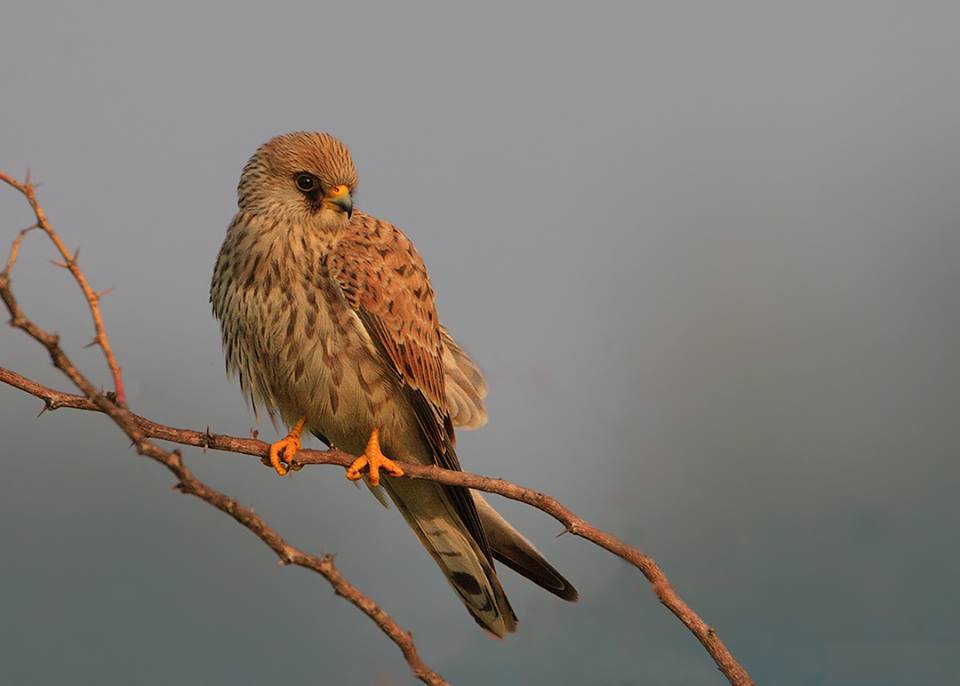Lesser kestrel: Red Data Book of Armenia

Falcons and caracaras – Falconidae
Status. A rare nesting species. Listed in the IUCN Red List of Threatened Species (ver. 3.1) as Vulnerable VU A2bce+3bce+4bce. According to IUCN criteria categorized as Vulnerable VU A2bce+3bce+4bce.
Distribution. Mediterranean countries, North Africa, Southern Europe, Asia Minor eastwards to Iran, Mongolia and China. Winters in Africa, Arab countries and India.
Distribution in Armenia. The nesting sites are found near the Spandarian Reservoir in the Syunik Province. Possibly, it nestles also in the Arax riverside and in the country’s north.
Habitats. Semi–deserts and arid mountain grasslands, up to highland meadows. During migrations prefers open landscapes – fields, grasslands and meadows.
Biological traits. Nestles in colonies or separate pairs. Aeries are usually placed on cliffs or beneath the roofage of buildings. Three to eight eggs are laid in mid–April to May. The brooding period is 28 days. Hatchlings emerge in late June – early July. Preys on invertebrates (spiders, orthopterans, beetles, dragonflies) and small vertebrates (field mice, shrews, lizards, sometimes passerines).
Population size and its trends. The number has declined all over the global range. In the early 20th century, it was a common bird in Arax riverside, where not known to breed at present. Number of breeding pairs in Armenia does not exceed 25–30.
Major threats. Low numbers, poaching and habitat destruction. Use of pesticides against the prey species.
Conservation measures. Listed in Appendix II of the CITES. The species demands for urgent protection. It is essential to strengthen control over poaching, reduce the disturbance during the nesting season, uncover new colonies, build artificial bases for nesting (wall crevices) within the current and historical ranges, enforce regulations over the use of pesticides in agriculture and to raise local awareness.
Suggestions
 The Ministry of Environment sent a letter international partners to draw their attention to the real danger of environmental disasters as a result of Azerbaijan's large-scale aggression towards the territory of Armenia
The Ministry of Environment sent a letter international partners to draw their attention to the real danger of environmental disasters as a result of Azerbaijan's large-scale aggression towards the territory of Armenia
 Vicia pisiformis: Red Data Book of Armenia
Vicia pisiformis: Red Data Book of Armenia
 Vavilovia formosa: Red Data Book of Armenia
Vavilovia formosa: Red Data Book of Armenia
 Trigonella capitata: Red Data Book of Armenia
Trigonella capitata: Red Data Book of Armenia
 Trigonella astroides: Red Data Book of Armenia
Trigonella astroides: Red Data Book of Armenia












